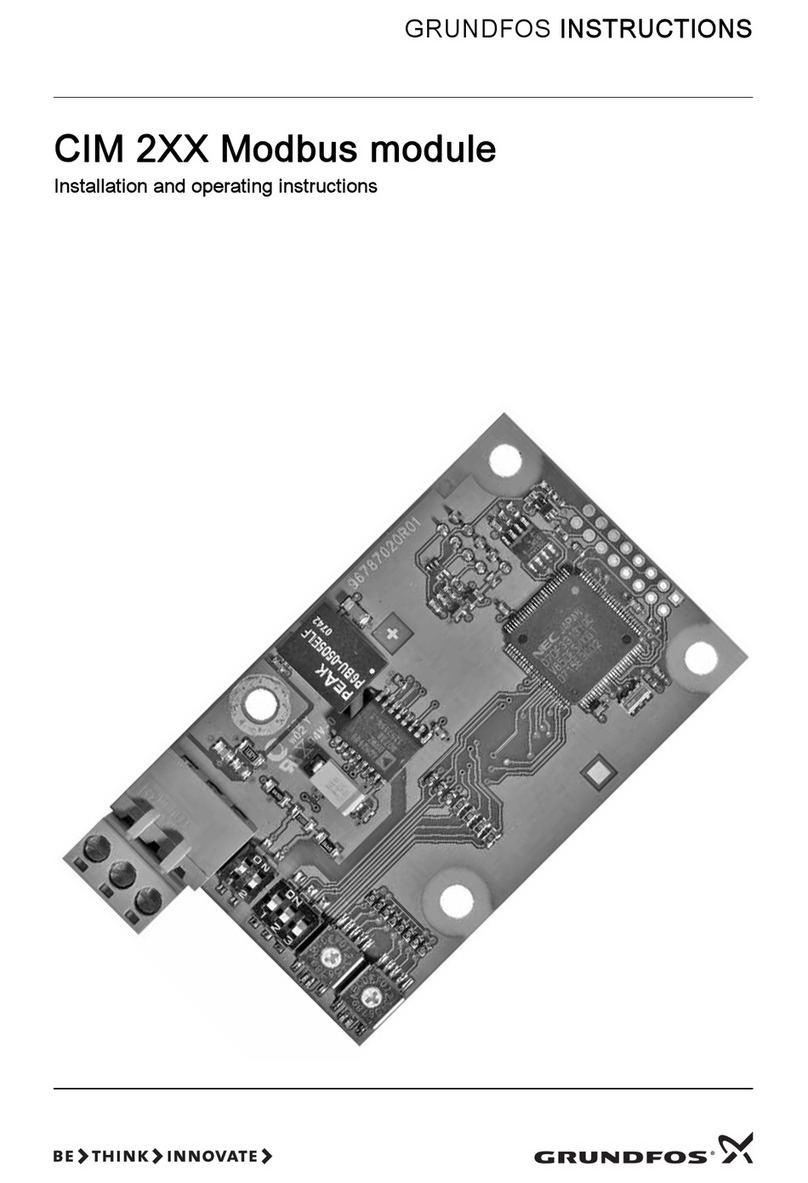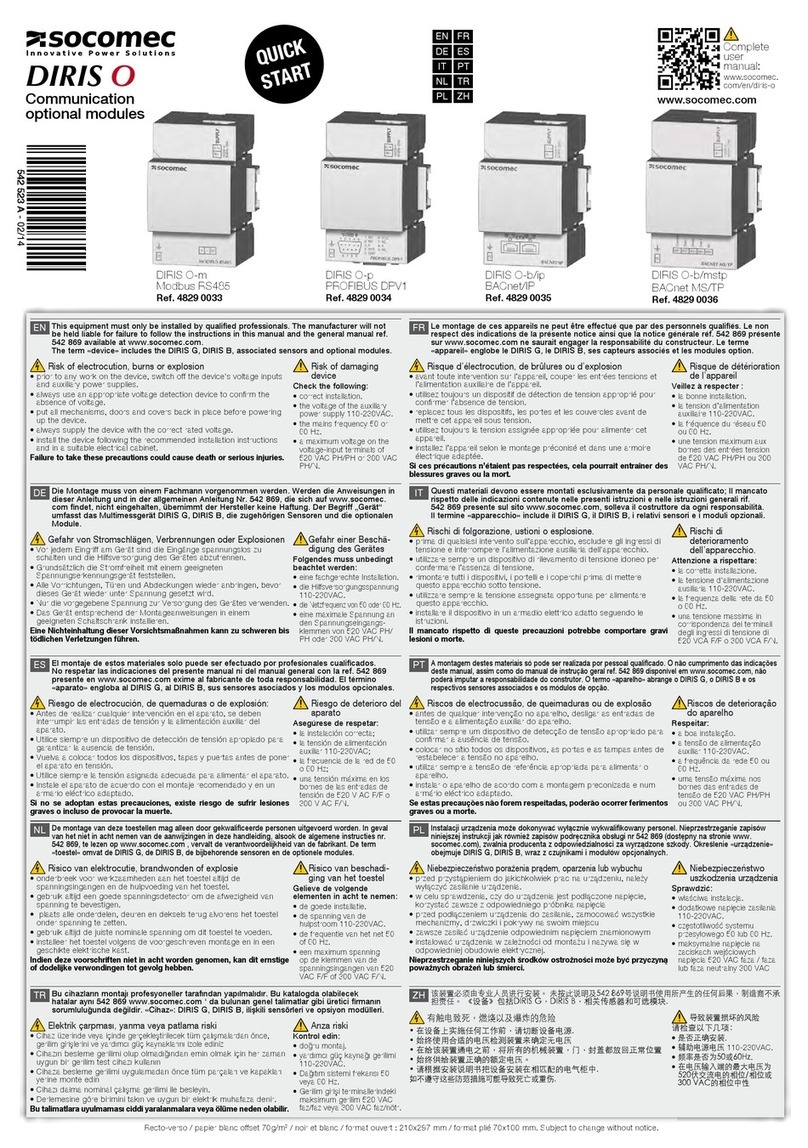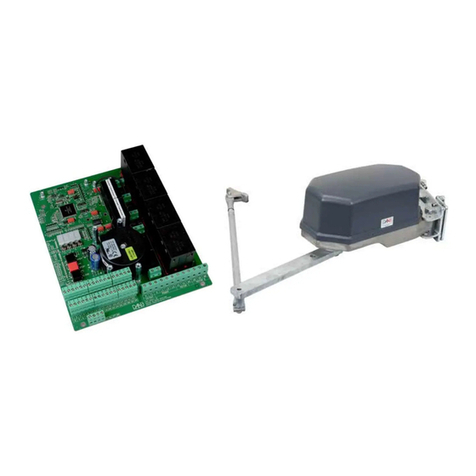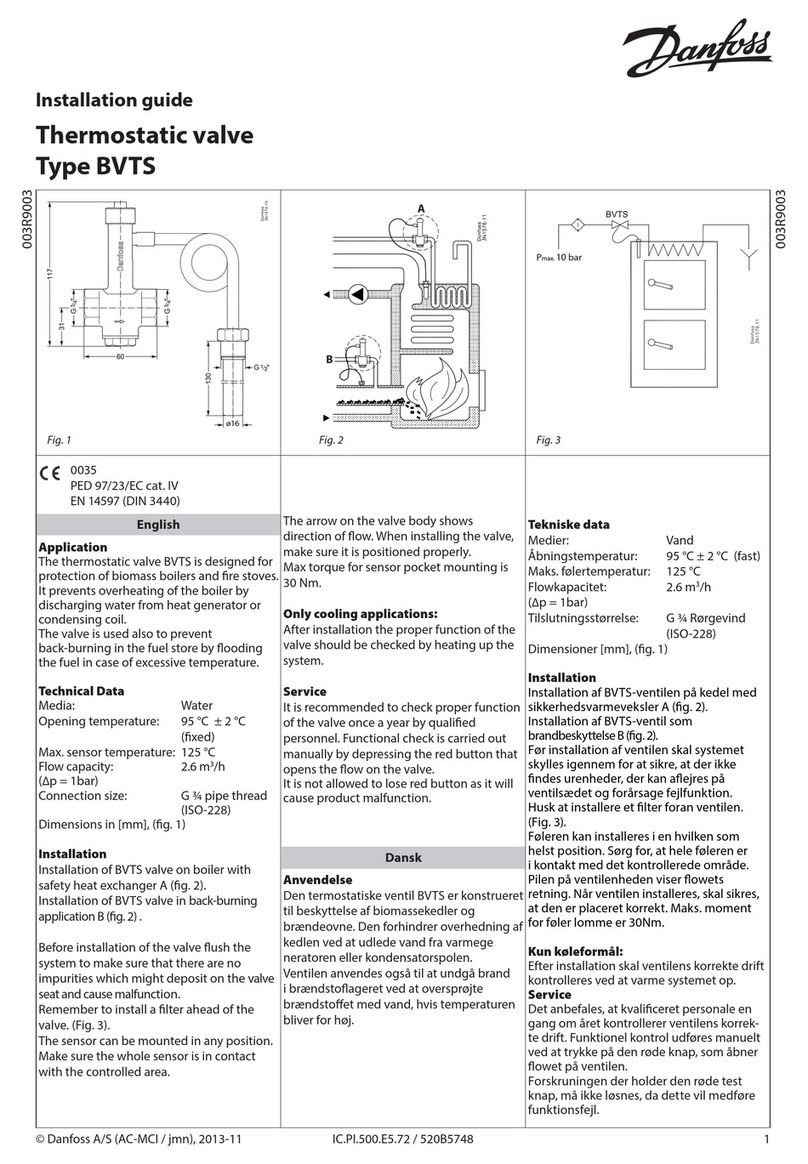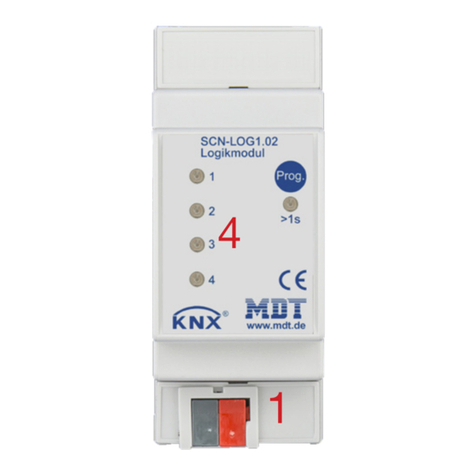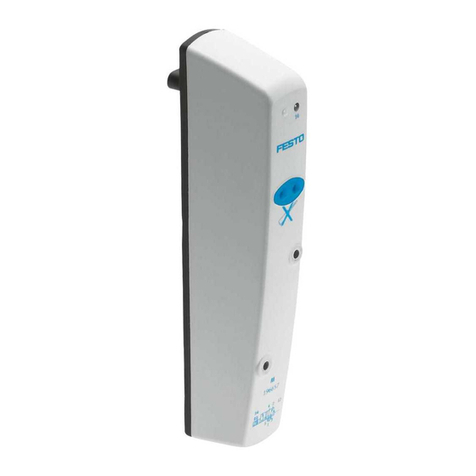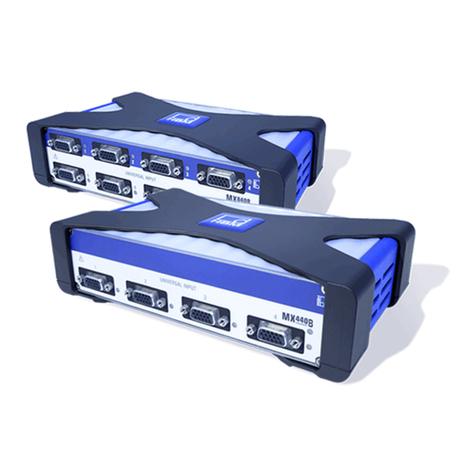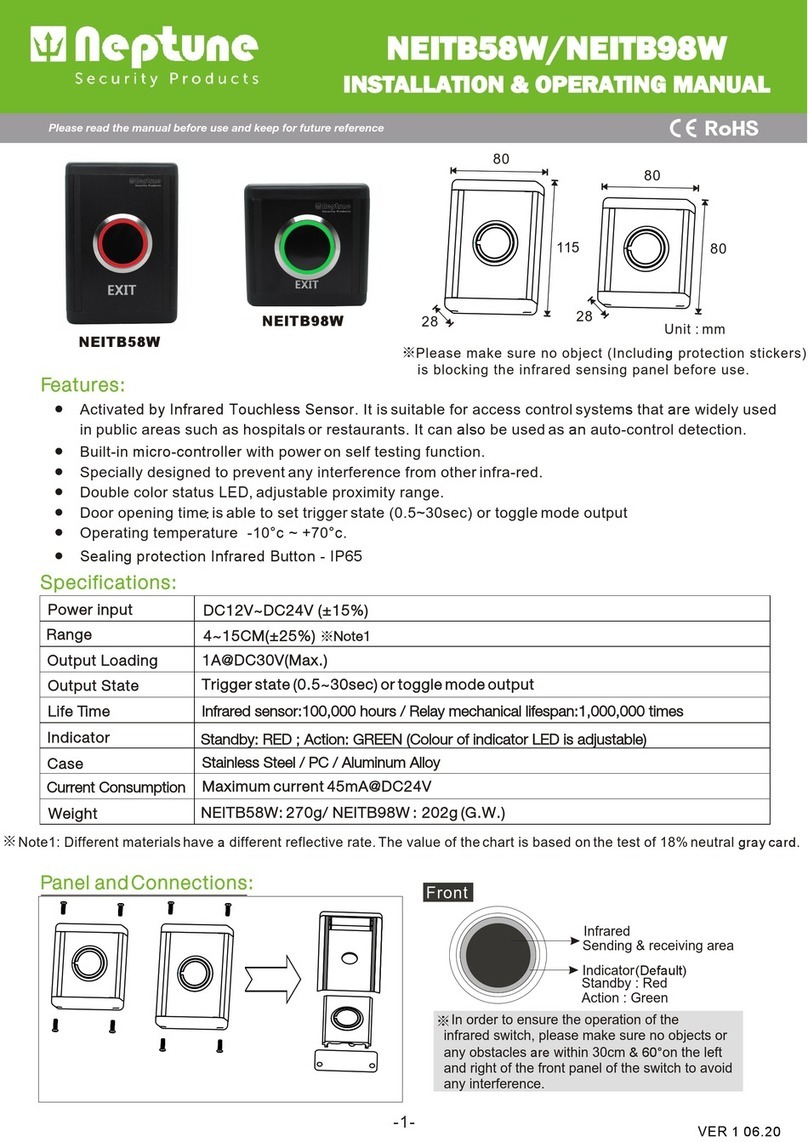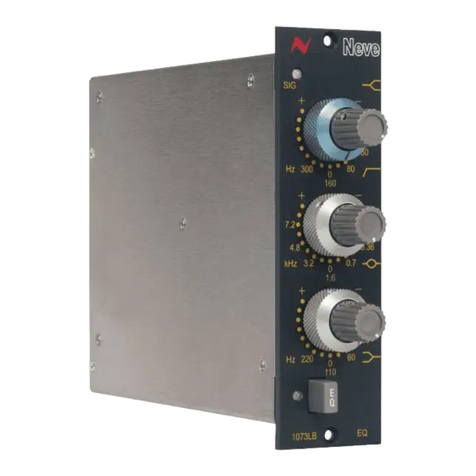Aeroflex 3065 User manual

3065 RF Combiner PXI Module
Operating Manual
Document no. 46892/762
Issue 4
29 October 2007

PREFACE
ii
About this manual
This manual applies to instruments with software issues of 2.0 and higher.
This manual explains how to set up and configure an Aeroflex 3065 RF combiner PXI
module. Where necessary, it refers you to the appropriate installation documents that are
supplied with the module.
This manual provides information about how to configure the module as a stand-alone device.
However, one of the advantages of Aeroflex 3000 Series PXI modules is their ability to form
versatile test instruments, when used with other such modules and running 3000 Series
application software.
© Aeroflex International Ltd. 2007
No part of this document may be reproduced or transmitted in any form
or by any means, electronic or mechanical, including photocopying,
or recorded by any information storage or retrieval system,
without permission in writing by Aeroflex International Ltd.
(hereafter referred to throughout the document as ‘Aeroflex’).

PREFACE
iii
Intended audience
Users who need to provide a single combined output from any combination of three input
ports, or direct RF switched connection between ports.
This manual is intended for first-time users, to provide familiarity with basic operation.
Programming is not covered in this document but is documented fully in the help files that
accompany the drivers and associated software on the CD-ROM.
Driver version
This PXI RF module is designed to be used with the latest software driver version supplied on
the Aeroflex 3000 Series PXI Modules CD-ROM part no. 46886/028. Operation with earlier
versions of driver software may not be supported.
Structure
Chapter 1 General information
Chapter 2 Installation
Chapter 3 Operation
Chapter 4 Brief technical description
Chapter 5 Acceptance testing

PREFACE
iv
Associated documentation
The following documentation covers specific aspects of this equipment:
PXI Modules CD-ROM Part no.
46886/028
Compilation containing soft front panels, drivers,
application software, data sheets, getting started and
operating manuals for this and other modules in the
3000 Series.
3000 Series PXI
Modules Common
Installation Guide
Part no.
46882/663
Detailed information on installing modules into a
chassis, external connections, powering up and
installing drivers. Multilingual safety precautions.
3000 Series PXI
Modules Installation
Guide for Chassis
Part no.
46882/667
Explains how to set up a populated chassis ready for
use.
PXI Studio User Guide Part no:
46892/809
Setting up and using the universal PXI application for
system configuration and operation.

PREFACE
v
Preface
The PXI concept
VXI and GPIB systems meet the specific needs of instrumentation users but are often too
large and expensive for mainstream applications. PC-based instrumentation may cost less but
cannot meet the environmental and operational requirements of many systems.
PXI (PCI Extensions for Instrumentation) is based on CompactPCI, itself based on the PCI
standard. PCI was designed for desktop machines but CompactPCI was designed for
industrial applications, and features a rugged Eurocard format with easy insertion and
removal. PXI adds to the CompactPCI specification by defining system-level specifications
for timing, synchronization, cooling, environmental testing, and software. While PXI extends
CompactPCI, it also maintains complete interoperability so that you can use any CompactPCI-
compliant product in a PXI system and vice versa. PXI also makes use of Windows software,
VXI timing and triggering, and VXIplug&play instrument drivers to provide powerful and
affordable systems.
®is a registered trademark of Aeroflex International Inc. in the US
PXI™ is a registered trademark of the PXI Systems Alliance
Windows™, Windows XP™ and Windows NT™ are trademarks of Microsoft Corporation

PREFACE
vi
Abbreviations/acronyms
dB Decibels
dBc Decibels relative to the carrier level
dBm Decibels relative to 1 mW
GND Ground
MSA Microwave Scalar Analzer
PCI Peripheral Component Interconnect
Pk-Pk Peak-to-Peak
PXI PCI eXtensions for Instrumentation
RF Radio Frequency
RMS Root Mean Square
SFP Soft Front Panel
SMA SubMiniature version A (connector)
UUT Unit Under Test
VSWR Voltage Standing-Wave Ratio
VXI VMEbus Extension for Instrumentation

1-1
Chapter 1 GENERAL INFORMATION
Introduction
Welcome to the operating manual for the 3065 RF combiner PXI module. This high-
performance RF conditioning module features integrated high speed RF switching and a high
isolation RF power combiner/splitter and covers the frequency range 250 MHz to 6.0 GHz
(usable down to 70 MHz) in a 3U high single-slot PXI module.
This module is intended for use in RF test systems with the 3020 Series digital RF signal
generator and 3030 Series RF digitizer. Together, these modules enable compact, high
performance modular RF test systems to be developed.

GENERAL INFORMATION
1-2
• The combiner provides a single output from any combination of three input ports A, B
and C. Each port is bi-directional, allowing many system configurations. Port D allows
for a second output or input channel, or for testing of multifunction mobile telephones that
support non-cellular functions.
• It also provides direct RF switched connection between ports A and B, and B and C, to
enable automated test system calibration.
• Possible combinations are:
Combined output
A,B,C to SUM
Switched Connection
A to B and C to D
A to D and C to B
Switched and combined
A to B and C to SUM
C to B and A to SUM
C to D and A,B to SUM
A to D and C,B to SUM
S
C6104
S
C
B
A
D
CONTROL
PCI
BUS
RF BLOCK
3065
The 3065 stores its own path loss calibration data, which can be accessed via software calls to
the driver.

GENERAL INFORMATION
1-3
Applications
The 3065 can be used in radio test applications such as transceiver testing, where the
combined port Σacts as a single port duplex connection, one or two RF sources provide TX
stimulus inputs, and an RF signal analysis instrument connected to the third port measures the
DUT’s TX parameters. For testing cellular phones with additional functions such as FM radio
or DVB, port D allows a second RF source to be routed to the unit under test.
Software
The 3065 is supplied with a VXI PNP driver and soft front panel, and a COM object and a C
interface DLL that provide similar functionality to the driver.
PXI Studio, also supplied with the module, configures your PXI modules as logical
instruments using an intuitive and powerful graphical interface. Currently, PXI Studio
provides comprehensive signal generator, digitizer and spectrum analyzer applications and
further development will provide analysis plugins to suit any modulation scheme.
RF Investigator, also supplied with the module, is an application that provides combined
operation of all Aeroflex 3000 Series modules from a single user interface, especially useful
for acceptance testing.
Deliverable items
• 3065 RF Combiner PXI module
• PXI Modules CD-ROM part no. 46886/028, containing soft front panels, drivers,
application software, data sheets, getting started and operating manuals for this and other
modules in the 3000 Series
• 3000 Series PXI Modules Common Installation Guide, part no. 46882/663
• 3000 Series PXI Modules Installation Guide for Chassis, part no. 46882/667
• SMA connector cable, part no. 43139/590, 3 off
• 50 ohm termination SMA, part no. 82532, 2 off

GENERAL INFORMATION
1-4
Cleaning
Before commencing any cleaning, switch off the chassis and disconnect it from the supply.
You can wipe the front panel of the module using a soft cloth moistened in water, taking care
not to wet the connectors. Do not use aerosol or liquid solvent cleaners.
Putting into storage
If you put the module into storage, ensure that the following conditions are not exceeded:
Temperature range: −20 to +70°C (−4 to +158°F)
Humidity: 5 to 93%, non-condensing

2-1
Chapter 2 INSTALLATION
WARNING
Initial visual inspection
Refer to the 3000 Series Common Installation Guide 46882/663.
Handling precautions
Refer to the 3000 Series Common Installation Guide 46882/663.
Hardware installation
Installing the module into the PXI chassis
Refer to the 3000 Series Common Installation Guide 46882/663 and Installation Guide for
Chassis 46882/667.

INSTALLATION
2-2
Connector care and maintenance
How to connect and torque an SMA connector
1 First, ensure that the mating halves of the connector are correctly aligned.
2 Next, engage the threads of the nut and tighten it by hand, ensuring that the mating halves
do not move relative to each other.
3 Then use a torque spanner to tighten the connector, in order to ensure consistent matching
and to avoid mechanical stress.
Torque settings for connectors are:
0.56 Nm test torque (development use, semi-permanent installations)
1 Nm final torque (permanent installations)
Never use pliers to tighten connectors.
Maintenance
SMA
Clean connectors regularly, using a cotton bud dipped in isopropyl alcohol. Wipe within the
connector cavity, then use a dry cotton bud to finish off. Check for any deposits.
Do not use other cleaners, as they can cause damage to the plastic insulators within the
connectors.
Cap unused connectors.
PCI
Protect PCI connector pins by keeping modules in their original packing when not fitted in the
rack.

3-1
Chapter 3 OPERATION
Front-panel connectors
1 ΣCombined output. SMA socket,
50 Ω.
2 A, B, C, D Individual inputs/outputs. SMA
socket, 50 Ω.
C6105
2
1
D
B
A
C
S
3065
SPWRSPWR
+27dBm MAX
A/B/C/D PWRA/B/C/D PWR
+24dBm MAX+24dBm MAX
Fig. 3-1 3065 front panel
Maximum safe powers
Σport: +27 dBm, 3 V dc
A, B, C, D ports: +24 dBm

OPERATION
3-2
Soft front panel (af3060_sfp)
The soft front panel provides a graphical interface for operating the module. It is intended for
testing and diagnosing, for demonstration and training, and for basic operation of the module.
It represents most of the functions available in the instrument driver. It is not however a
comprehensive application suitable for measurements: for this, use the appropriate driver,
COM object or C interface DLL, supplied with the modules that form the test system.
Installation
The soft front panel is installed during the driver installation process (refer to the 3000 Series
PXI Modules Common Installation Guide, part no. 46882/663).
Open the AF3060_sfp.exe file; this is in the C:\VXIPNP|WinNT\af3060\ directory on a
Windows NT machine, for example. It is also accessible from the Windows Start menu under
Programs\Aeroflex\PXI Module Front Panels\AF3060 Front Panel. The soft front panel,
similar to that in Fig. 3-2, is displayed.
Detailed help information
Soft front panel controls are all available as driver export functions unless noted otherwise,
and are documented in the help files (page 3-10). This operating manual provides an
overview of the facilities that the module provides and summarizes its operation; however,
refer to the help files for detailed descriptions of functions, together with their parameter lists
and return values.

OPERATION
3-3
Routing
Path loss
Boot
Menu bar
C6106
Fig. 3-2 Combiner soft front panel

OPERATION
3-4
Soft front panel controls
Menu bar
File
Click Exit to close the application.
Settings
Load and Save allow you to load and save soft front panel configurations from and to your
preferred locations. If you did not change the default location when installing the software, it
is C:\VXIPNP\WinNT\af3060\settings, and settings are saved as .ini files.
You can edit settings files as required. Edit the saved .ini file using a text editor (for
example, Notepad) to remove unwanted parameters. Ensure only that you do not delete
the General (VendorID, DeviceID) and Version (Major/Minor) parameters. Save the
changed file. When the settings file is next loaded, the configuration of the soft front
panel changes to match the parameters remaining in the settings file.
Directories lets you choose the locations for your front-panel configuration settings.
Options
There are currently no options available on the 3065.
Help
Instrument Information provides the module’s PXI resource code and serial number,
revision numbers for driver and PCI, its last calibration date, and associated file information
and module build information.
About provides the version and date of the soft front panel.

OPERATION
3-5
Boot
Click Boot to initialize the module and view the Boot Resource window. Resources available
for initializing are shown in blue.
Select the 3065. Click OK. While you select the boot resource, the indicator is amber. Once
the module has initialized, the indicator changes to green in a few seconds.
If no calibration data is available, the driver returns a caution. If this happens, return the
module for calibration.
s/n:
After the module initializes, this field displays its serial number.
Res:
After the module initializes, this field displays its VISA resource string.
Routing
Check the appropriate ‘to SUM’ box to provide a single combined output at Σfrom some or
all of the inputs A, B and C. Remaining ports are routed as shown. All ports are
bi-directional.
Check one of the last two boxes to provide direct RF connections between input ports whilst
isolating the combined output.
The routing diagram changes to show the interconnections of the selected switching scheme.
Path Loss
Displays the losses, in dB, of various combiner paths at the frequency entered in the
RF Frequency (Hz) field. For example, A to Sum (dB) displays the dB loss between the A
and Σports at the specified frequency.
Loss values are temperature-compensated to maintain the accuracy of the factory calibrations.

OPERATION
3-6
Switching schemes
Here are some examples of how you can use the 3065 and other PXI components to provide
efficient and economical test setups.
Basic configuration
S
C6110
S
C
B
A
D
CONTROL
PCI
BUS
RF BLOCK
3035
3025
3025
UUT
3065
50 W
Fig. 3-3 Transceiver test
This configuration connects one or two signal sources and a digital analyzer to the unit under
test (UUT) for amplifier or mixer intermodulation testing.

OPERATION
3-7
Testing two devices
S
S
S
S
C
C
B
B
A
A
D
D
CONTROL
CONTROL
PCI
BUS
PCI
BUS
RF BLOCK
RF BLOCK
3035
3025
UUT 1
3065
3065
S
S
C6111
S
S
C
C
B
B
A
A
D
D
CONTROL
CONTROL
PCI
BUS
PCI
BUS
RF BLOCK
RF BLOCK
3035
3025
UUT 2
3065
3065
Configuration 1 Configuration 2
Fig. 3-4 Dual transceiver test
These two configurations let you use a single signal source and digital analyzer to test two
devices.

OPERATION
3-8
Testing three devices
SS
3035
C6112
S
C
B
A
D
CONTROL
PCI
BUS
RF BLOCK
UUT 1
UUT 2
UUT 3
50 W
S
C
B
A
D
CONTROL
PCI
BUS
RF BLOCK
3025
3065 3065
Fig. 3-5 Triple transceiver test
This configuration lets you connect three devices under test to a single signal source and
digital analyzer.
Table of contents
Other Aeroflex Control Unit manuals
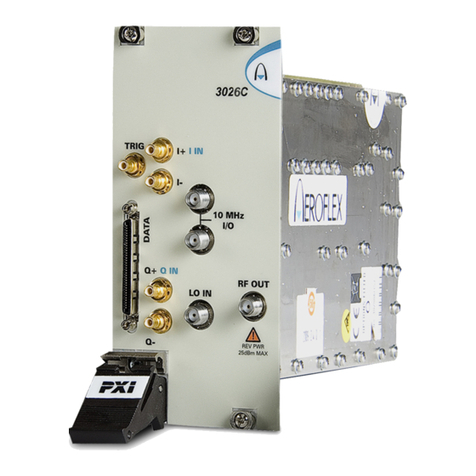
Aeroflex
Aeroflex 3000 Series User manual

Aeroflex
Aeroflex 3060 Series User manual
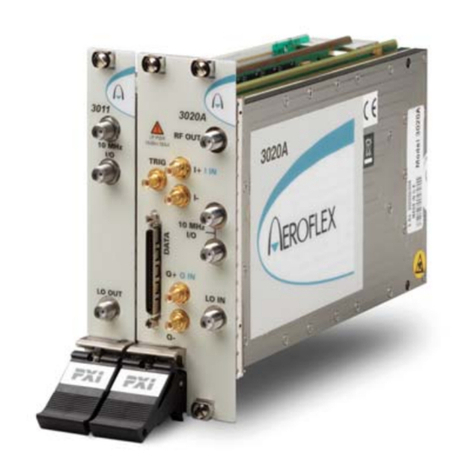
Aeroflex
Aeroflex 3020A User manual

Aeroflex
Aeroflex 3010 Series User manual

Aeroflex
Aeroflex 3020 Series User manual
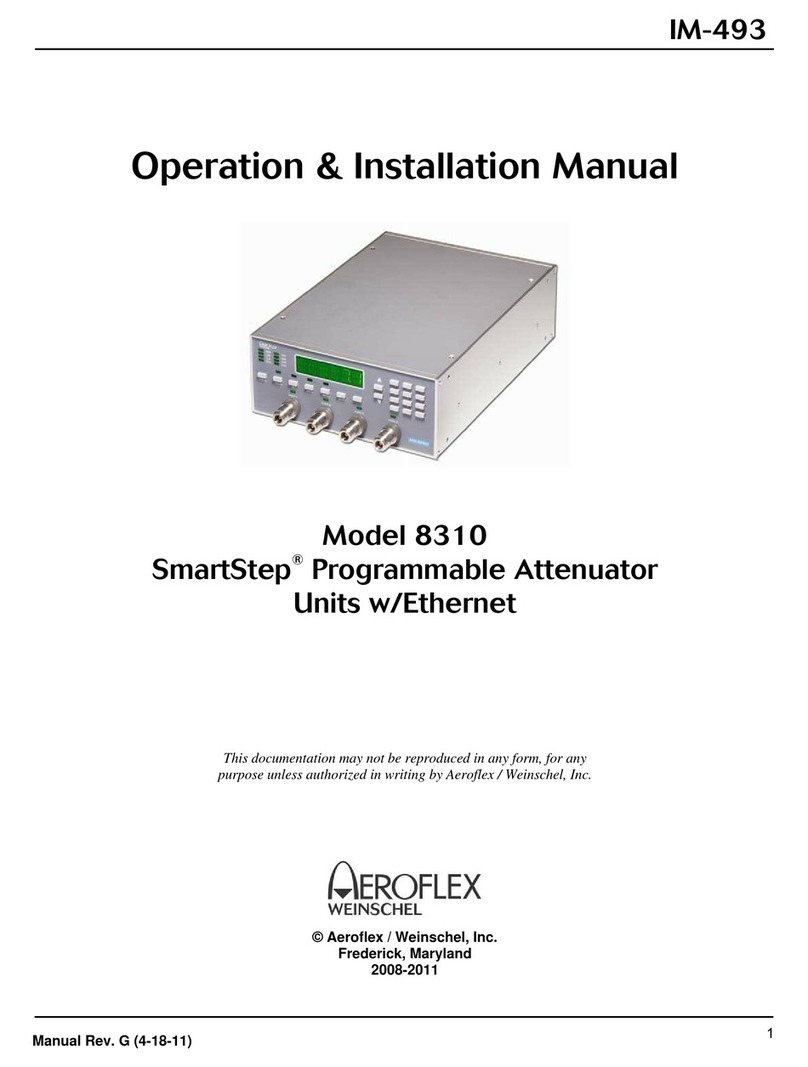
Aeroflex
Aeroflex SmartStep 8310 User manual
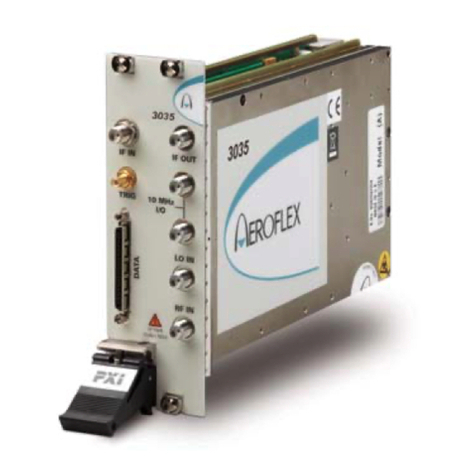
Aeroflex
Aeroflex 3035 User manual
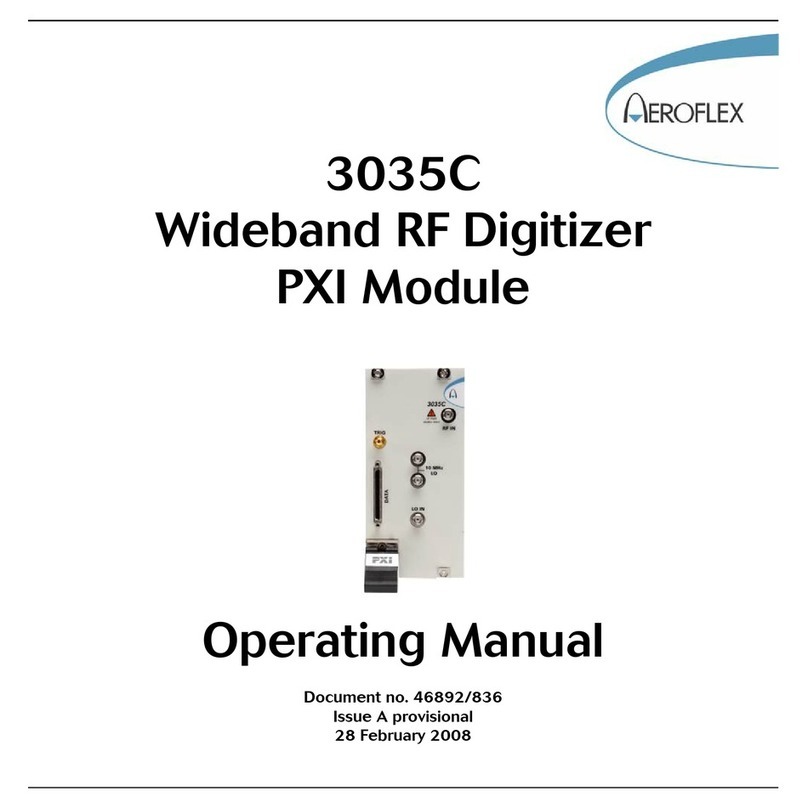
Aeroflex
Aeroflex 3035C User manual
Popular Control Unit manuals by other brands

vacuubrand
vacuubrand VAC 24seven Instructions for use
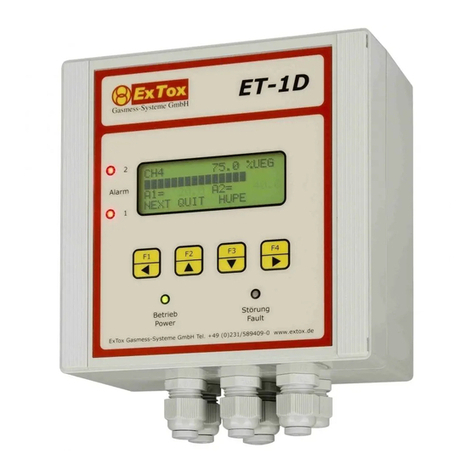
ExTox
ExTox ET-1D Series instruction manual

Texas Instruments
Texas Instruments LM5123EVM-BST user guide
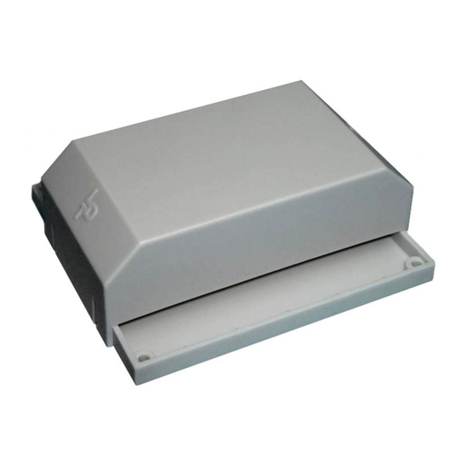
LDT
LDT s88-ClockMaster Series operating instructions

Eden
Eden C1P2FXBT Technical manual
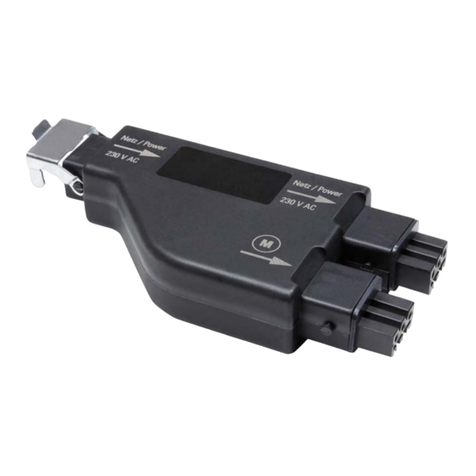
elsner elektronik
elsner elektronik RF-MSG-DST Technical specifications and installation instructions

